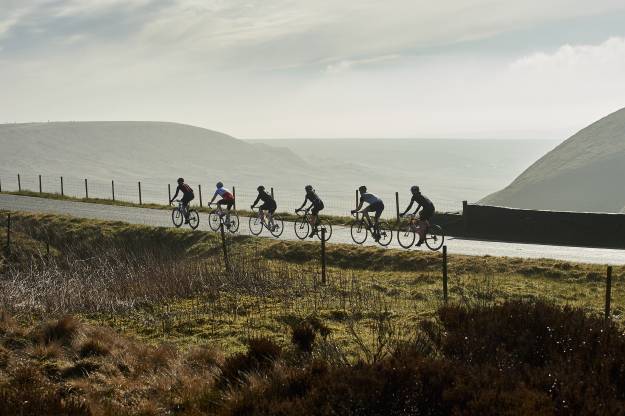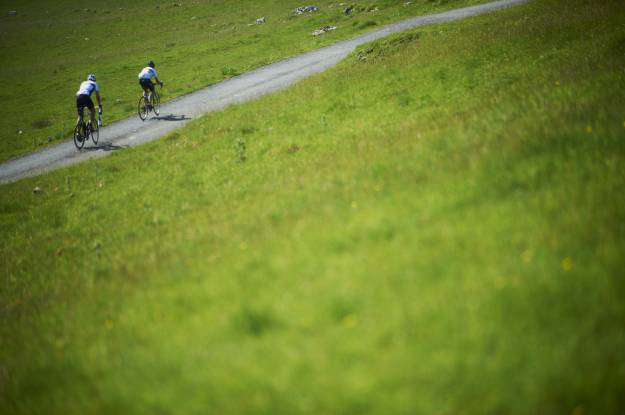Knowledge Level: Beginner
Within the blanket title of mountain biking, there is a broad spectrum of disciplines, including cross-country, downhill and enduro. Deciding on which sort suits your riding can appear confusing. However manufacturers are now producing relaxed geometry full suspension trail bikes which aren’t overly heavy, climb well, descend brilliantly and are comfy for all day riding. They won’t quite match a discipline specific machine on its favoured trails but, for general riding and trail centre fun, they are hard to beat.
Forks and Shock
Smooths out the trail, absorbs impact and enhances traction. Different forks and shocks will offer varying degrees of travel, the amount of vertical movement they allows. For trail bikes the current trend is for longer travel forks offering 120-160 mm with the rear shock usually offering a similar amount. More travel will generally mean a more forgiving ride and a slacker head angle, which makes them suited to steep and technical descents. Longer travel bikes used to be unwieldy, heavy and not efficient to climb on but modern models are surprising nimble uphill.
Forks and shocks use a combination of springs and air to deliver the travel and allow you to tune how stiff the suspension is and how it behaves. Setting up your suspension properly makes a huge difference to how your bike will ride. Most forks and shocks allow you to lock out the suspension, which can be beneficial on non-technical climbs, and some have a remote handlebar lever to do this for the forks. The front wheel will lock into the fork with a thru-axle, offering significantly more stiffness than a traditional quick release skewer.
Brakes
Hydraulic disc brakes are now standard on almost all mountain bikes although cable operate ones may be specced on cheaper and entry level bikes. Hydraulic disc brakes have revolutionised mountain biking and, by keeping the braking surface away from the trail and offering reliable control, power and modulation not matter how foul the conditions, have allowed riders to push the limits of the sport. Basic maintenance simply involves changing the pads when they become worn but occasionally the system may require bleeding and, although manageable at home, does require a specialist bleeding kit.
Gearing
Mountain bikes have a wider range of gears than road bikes to enable you to tackle steep, slippery and technical terrain. Single chainring set-ups are becoming standard on trail bikes combining a 30t-36t chainring with a 10, 11 or 12 speed cassette with a huge range up to 10t - 50t. The single chainring will have a special tooth profile which, combined with a clutch rear mech, minimises the risk of chain drop and negates the need for a chain catcher.
Wheels
Mountain bike wheels have to be strong, light, stiff and have wide enough rims to accommodate high volume tyres. Top end bikes may have carbon rims but, for reliability and durability, alloy is far more commonplace. The disc brake rotor attaches to the hub either with six bolts or using Shimano’s Centre Lock system that uses a lock ring. Rotor sizes vary from 160 mm-203 mm, often with a bigger rotor on the front.
Wheel size has been a hot topic of debate over the last twenty years and the previous standard 26” wheels have now been largely discarded by the industry. For trail bikes, 650b (27.5”) wheels seem to have been settled on for now but you can expect that to change.
Tyres
The choice of widths, tread pattern and rubber compounds of mountain bike tyres can be truly bewildering. It is worth talking to some experienced local mountain bikers or consulting with your bike shop to determine the best tyres for the type of riding and trails you will mostly be tackling. Opting for a tubeless set-up offers improved traction from being able to run lower pressures without the risk of pinch flats. Also, the sealant in the tyre will seal the majority of penetration punctures.
Frame Geometry and material
Modern trail geometry combines a fairly slack head angle with a relatively short back end, inspiring downhill confidence but also delivering a passable ride on climbs and the flat.
Mountain bike frames come in a number of materials including alloy, steel, carbon and titanium. Every bike frame material has its pros and cons but, no matter what material you choose, quality is key.
Pedals
Many novices and plenty of more experienced riders are more comfortable riding off-road with flat pedals. If the terrain gets too much, they make it easier to bail out, use a foot as an outrigger or even walk the sections. Mountain biking flats have aggressive pins on them which bite into the soft rubber soled shoes you will wear. Clipless pedals offer advantages too, such as improved stability and pedalling efficiency.
Mountain biking clipless pedals are multisided for easier reengagement and usually have a mechanism to clear mud. The cleats are recessed into the souls of the shoes to make walking easier. Which brand or system you choose mainly boils down to personal preference.
Saddle
Mountain bike saddles don’t differ too much from their road cousins. They sometimes have bigger rails, a narrower rear to allow you to slide off the back of the saddle and a more robust covering.
Dropper post
Using a remote button on the handlebars a dropper post allows you to lower your saddle for steep and technical downhill sections.










